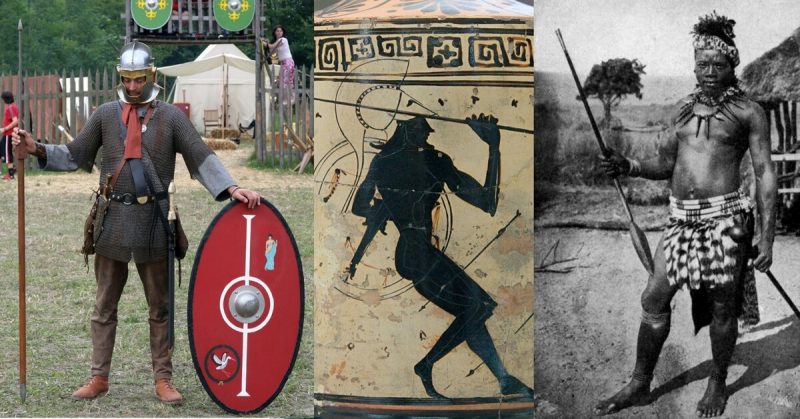Spears have featured in warfare throughout history. Even after the arrival of firearms, spears continued to play a dominant role, from the pike blocks of Europe to the fast-running infantry of Shaka Zulu.
Over and over again, spears and weapons similar to them have transformed warfare.
Early Spears
Spears started out as hunting weapons. One step up from the primitive club, they were initially made by burning the end of a straight stick. Once it became pointed and hardened, that point was further refined by scraping. Prehistoric humans used these to bring down animals for food. A weapon like this was found buried between the ribs of an elephant skeleton in Germany.
Around the same time, people were learning to make tools by breaking stones and using the sharp edges. These could be attached to the ends of spears, making them sharper and harder. The creation of bronze-tipped spears around 3500 BC took this a step further.
We do not know when people first used spears against each other. Investigations by anthropologists show how they would have been used by hunting tribes and how they changed warfare.
First, they were more consistently deadly than clubs. Second, they were missile weapons – early spears were thrown at prey.
Spears, therefore, added greater accuracy causing death and injury, as well as further range in combat, to ancient battlefields.
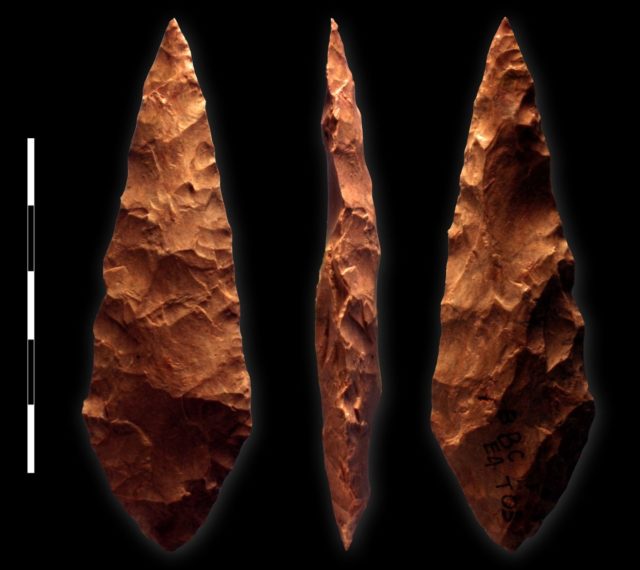
The Phalanx
The emergence of farming led to the development of towns. Fewer people were hunting leading to less practice at throwing spears. However, they were able to use them in a way they had not done before.
The phalanx – a closely packed block of spearmen – made the spear much more deadly up close. Opponents without the reach of long spears or the discipline for a phalanx of their own struggled to confront the spearmen.
Phalanxes made easy targets for archers and those throwing spears. This encouraged the development of body armor, making the phalanxes less vulnerable to missiles.
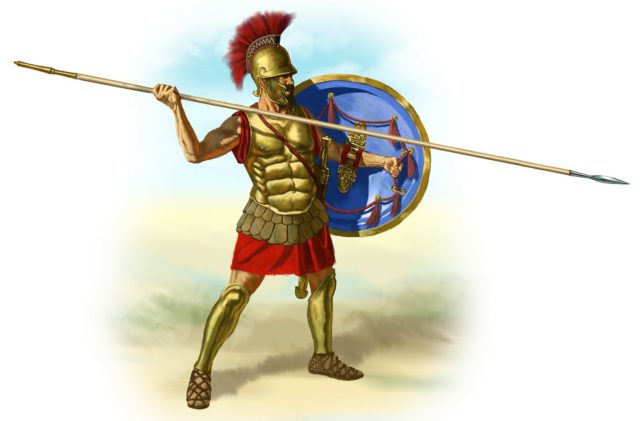
This was the formation that made Greece into a military power. Greek phalangists became the most desired mercenaries in the Mediterranean. Philip II of Macedon and his son Alexander used them to carve out an empire that stretched from Greece to India.
The phalanx would continue to be a significant formation throughout the next 2000 years although the spear would be used in other ways, bringing further changes to warfare.
The Pilum
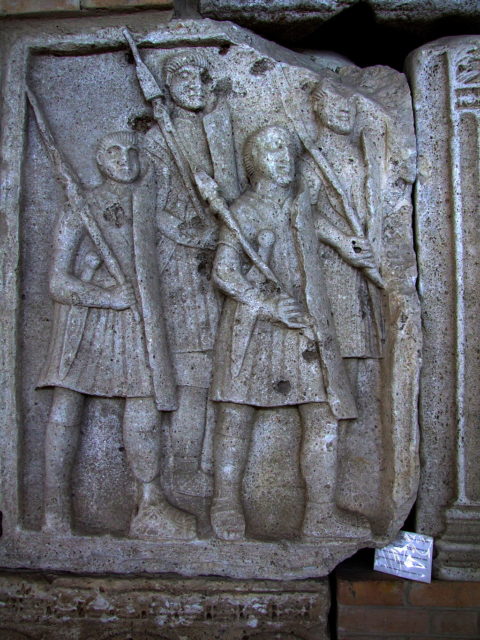
The Roman Empire began its rise to power using spear phalanxes imitated from Greek settlers. Then waves of military reform saw the Romans develop a different way of fighting in which spears played another role.
The Romans went back to using spears as throwing weapons. Each of their legionaries was equipped with a pilum, a throwing spear. It was once thought all legionaries were provided with two of these – a light pilum and a heavy one. It is now recognized the evidence for this is thin and the legionaries may often have carried only one spear. The fact they were standard issue is beyond doubt.
The pilum added to the shock impact of a Roman attack. Flinging all their spears in a single volley, the legionaries then charged. It was high impact infantry warfare which saw the Romans conquer half the known world.
The pilum also served other purposes. It could be used in building emergency defenses or carrying legionaries’ heavy equipment.
Lances
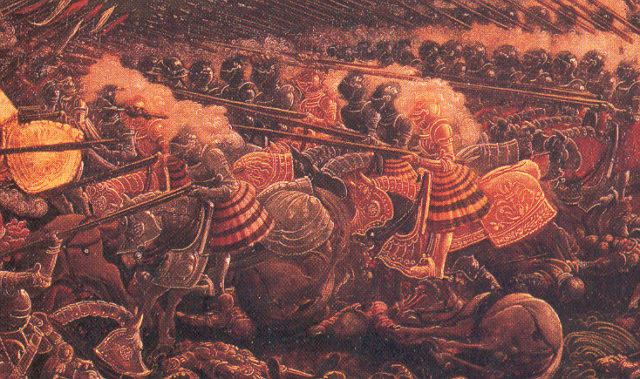
The fall of Rome was followed by a period of instability. From this emerged what would become the next iconic form of European warfare and the next transformation in the role of the spear – the mounted knight.
The Romans had used cavalry, often armed with spears, but these had not played a central part in their armies. Starting with the Franks, this changed. European warlords made bands of well-equipped aristocratic cavalry the heart of their fighting formations. These knights carried long spears called lances, at first used over-arm to stab, as seen in the Bayeux Tapestry.
As they refined their tactics, feudal knights also improved their equipment. Better saddles and stirrups allowed them to use the lance underarm, putting the full weight of their charge into the strike. This made them terrifying to stand against, reinforcing the dominance of the military elite. It led to centuries in which cavalry were seen as the most important component in a battle.
Polearms
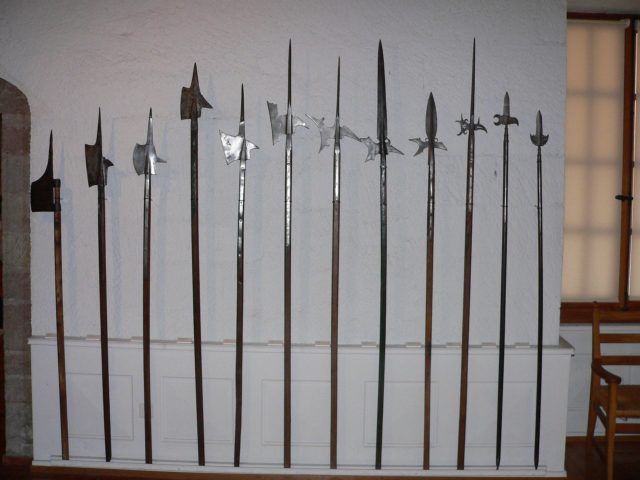
Meanwhile, the infantry spear evolved into a broad range of different weapons, collectively known as polearms. It was with these that formations such as the Scottish schiltrons were able to hold off charges by heavy cavalry. It was with polearms that the Swiss infantry became the most feared in Europe.
The most widely recognized polearm is the halberd. A cross between a spear and an axe with a hook on the back of its blade, it was an adaptable weapon that could be used to stab, slash, or even pull riders down from their horses. Other popular polearms included the glaive and, over in Japan, the naginata – weapons designed primarily for cutting.
Pikes
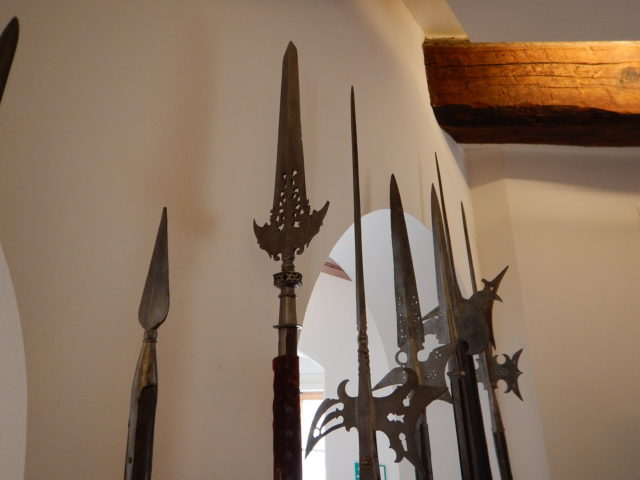
Swiss infantry were among the early users of the spear that would survive into the gunpowder age – the pike. An extremely long spear, the pike was fielded in large blocks similar to ancient phalanxes, but without the shields carried in those formations.
Pike blocks could effectively hold off charging cavalry, presenting as they did a wall of spikes into which no horse would want to charge. Infantry were divided into two distinct groups – those shooting and those stabbing. They protected musketry until it developed into the dominant form of fighting. After this, bayonets were implemented and the musketeers were able to defend themselves.
With the arrival of the bayonet, spears all but disappeared from armies that had access to guns. Lancers were still used on occasion, and Europeans were sometimes faced with spears again elsewhere in the world.
The spear had been the adaptable face of warfare for millennia. Now its time had passed.
